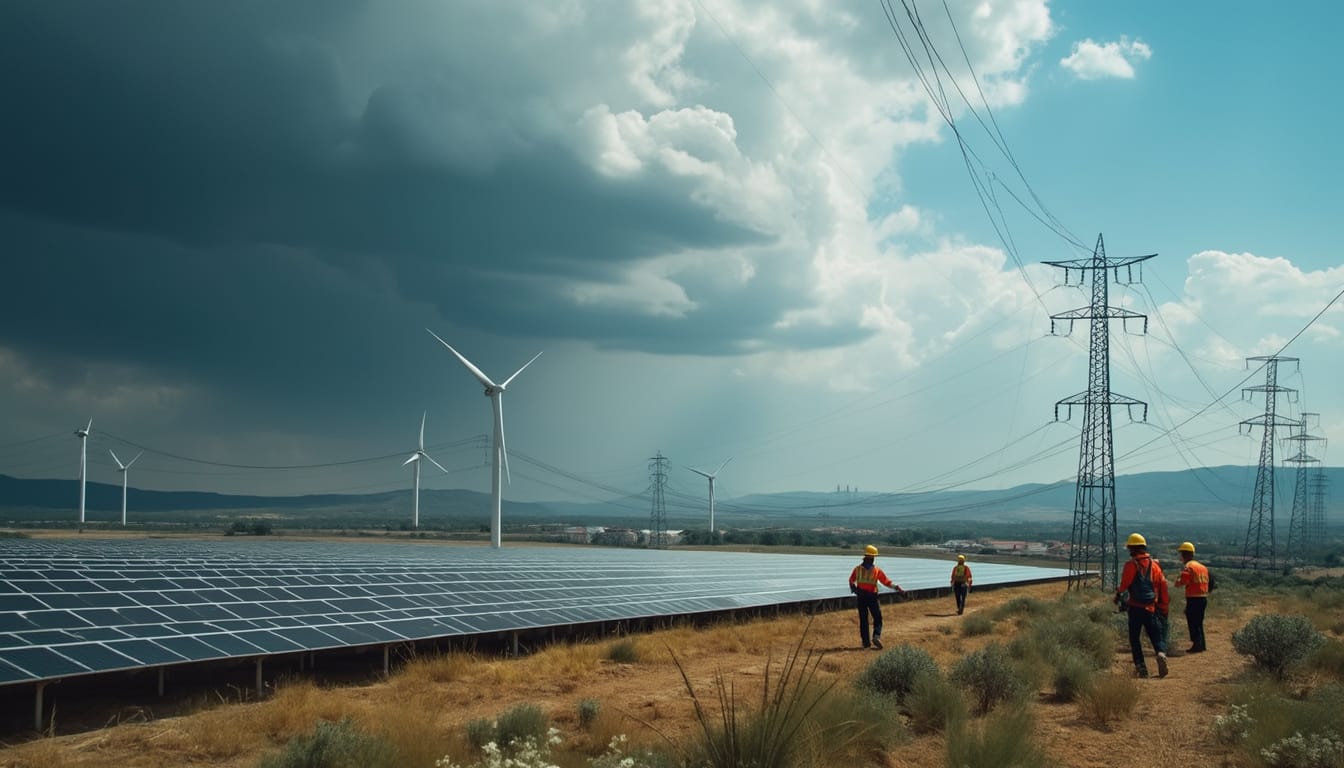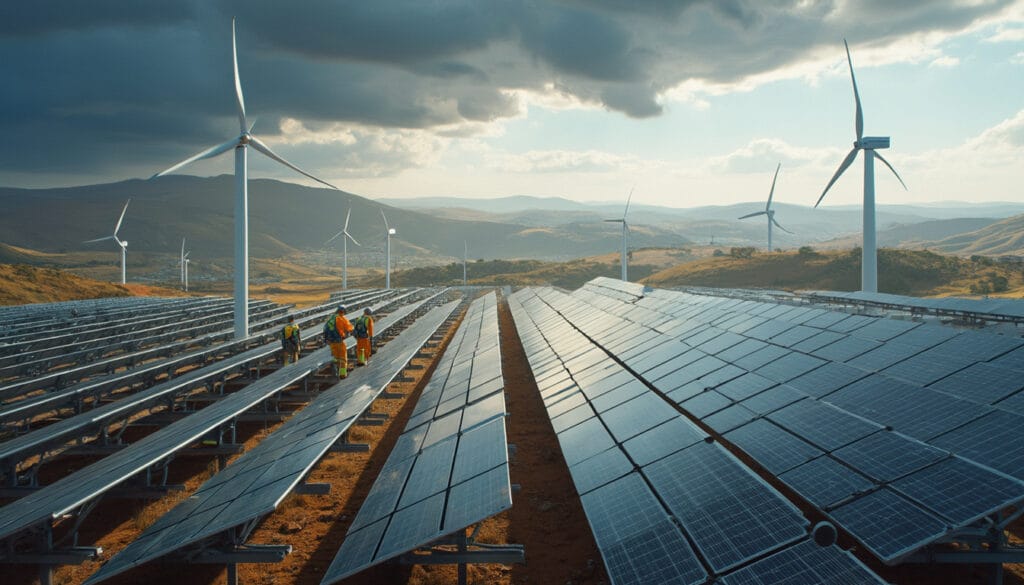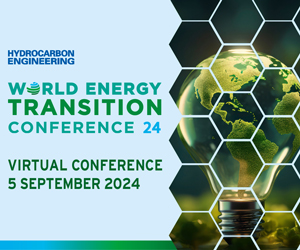“`html
The recent major power outage in Spain and Portugal has raised awareness about the fragility of the electricity grids in the face of the rise of renewable energies.
As the world moves away from fossil fuels, energy infrastructures must evolve to maintain essential stability.
The integration of solar and wind power presents new challenges in terms of balance between supply and demand.
Traditional turbines in power plants provide essential inertia to regulate the frequency of the grid. However, solar and wind farms, using electronic systems, complicate this management. Innovative solutions such as flywheels and compressed air storage are emerging to support grid stability. The future of grids depends on their ability to adapt and integrate these technologies to ensure a reliable energy supply.
“`

The recent massive outage that paralyzed Spain and Portugal has highlighted the major challenges faced by modern electricity grids. This interruption, the cause of which remains unclear, has rekindled the debate on the ability of renewable energies to support increasing energy demand without compromising grid stability. As countries seek to reduce their dependence on fossil fuels, adapting electrical infrastructures has become an urgent necessity.
Table of Contents
ToggleWhat were the trigger factors of the outage in Spain and Portugal?
The outage that occurred last week in the two Iberian countries has raised many questions. Although the exact causes have not yet been determined, several factors appear to have played a crucial role. The high share of renewable energies in electricity production, notably solar and wind energy, has been pointed out by some critics. These energy sources, while environmentally friendly and sustainable, are inherently intermittent, relying on weather conditions to produce electricity. During production peaks, as was recently the case in Spain with 70% of electricity coming from renewables just before the outage, managing the balance between supply and demand becomes complex.
How do renewable energies affect the stability of electrical grids?
The increasing integration of renewable energies presents significant technical challenges for grid operators. Traditionally, electricity grids relied on conventional power plants — gas, coal, nuclear, and hydroelectric — equipped with rotating turbines that stabilize the frequency of the current. These machines provide essential inertia, helping to maintain the balance between electricity demand and supply. In contrast, solar and wind farms use electronic systems to inject energy into the grid, thereby reducing the available inertia and complicating the operators’ task of maintaining a stable frequency of 50 hertz in Europe.
According to Jose Luis Dominguez-Garcia, an expert in electrical systems at the Catalonia Institute for Energy Research (IREC), renewables will need to not only provide carbon-free electricity but also “assist [the] system with additional controls to support the grid, particularly in terms of inertia.” This need for increased support underscores the importance of innovative solutions to compensate for the reduction of traditional inertia.
What solutions exist to strengthen grid stability with renewables?
In the face of the challenges posed by renewable energies, several technical solutions are currently being explored to maintain grid stability. Among these solutions are gravitational energy storage, cryogenic liquid air, compressed air, and concentrated solar power. In the UK, the use of flywheels represents a proven option. These flywheels store the kinetic energy generated by massive wheels spinning at high speed, using surplus energy from solar and wind farms. In times of need, this kinetic energy can be converted into electricity to stabilize the grid.
Furthermore, investments in transmission infrastructure are crucial. A recent investment of 1 lakh crore rupees has been allocated to strengthen these infrastructures to better support renewable energies, although risks remain regarding their effective implementation.
What is the role of hydroelectric and nuclear power plants in the new energy landscape?
As dependence on fossil fuels decreases, hydroelectric and nuclear power plants regain strategic importance for grid stabilization. As Marc Petit, a professor of electrical systems at CentraleSupélec engineering school, highlights, these plants, equipped with rotating machines, provide essential inertia that is lacking in renewables based on electronic systems. Consequently, they become even more critical to ensure the reliability of electricity grids in the context of the energy transition.
What are the economic and political impacts of this energy transition?
The transition to renewable energies is not just a technical challenge but also an economic and political one. In the United States, for instance, disagreements with allies over renewable strategies complicate the harmonized adoption of these energy sources. Moreover, some industrial players, such as BP, are choosing to return to oil and gas sources, illustrating the tensions between ecological goals and traditional economic interests.
Politically, controversial measures are also at play. A coalition member recently stated that “letting Rome burn is the only way to disgust voters with renewable energies,” reflecting internal divisions on the best path forward for the energy transition. These statements highlight the political challenges associated with the effective implementation of renewable energy policies.
How can electricity grids adapt to integrate more renewables?
Adapting electricity grids to integrate a growing share of renewables requires a multifaceted approach. This includes modernizing existing infrastructures, adopting advanced storage technologies, and improving demand management. According to a detailed study on the status of renewable energy capacity in the United States, investments in storage technologies, such as flywheels, are essential to compensate for the intermittency of renewables and ensure a stable energy supply.
Moreover, integrating intelligent energy management systems capable of predicting and reacting to fluctuations in production and demand is crucial. These systems use advanced algorithms to optimize electricity distribution, thus minimizing the risks of overload and outages. In parallel, strengthening the capacities of hydroelectric and nuclear power plants can provide the necessary inertia to stabilize the grid in case of unforeseen fluctuations.
What are the potential benefits of a successful transition to renewables?
A successful transition to renewable energies offers numerous benefits, ranging from reduced greenhouse gas emissions to the creation of new jobs in the green sector. By stabilizing electricity grids through cutting-edge technologies and robust infrastructures, it is possible to ensure a reliable energy supply while decreasing the carbon footprint. Additionally, investment in transmission infrastructures, as mentioned in this article, stimulates the economy and fosters technological innovation.
Socially, a successful energy transition can also improve energy security, reducing dependence on fossil fuel imports and enhancing the autonomy of nations. By effectively integrating renewables, countries can better respond to fluctuations in demand and unexpected events, thus ensuring greater resilience of energy systems in the face of potential crises.
What are the international perspectives facing the challenges of renewables?
Globally, the challenges related to the integration of renewable energies into electricity grids vary depending on economic, political, and geographical contexts. In the United States, for example, disagreements with their allies illustrate the difficulties in harmonizing energy strategies. In Europe, initiatives to strengthen transmission infrastructures and adopt advanced storage technologies demonstrate a willingness to overcome technical obstacles.
In other regions, such as Asia and Africa, the rapid growth of renewable energies offers unique opportunities but also requires specific adaptations to local infrastructures. For example, developing hybrid systems combining solar, wind, and storage can maximize the efficiency and reliability of electricity grids in various contexts.
In conclusion, the outage in Spain serves as a powerful reminder of the crucial issues facing the transition to renewable energies. To ensure a stable and sustainable energy supply, a combination of technological solutions, strategic investments, and international cooperation is essential. The future of electricity grids will depend on the ability of nations to innovate and adapt in the face of these complex challenges.
#>
Articles similaires
Thank you!
We will contact you soon.











